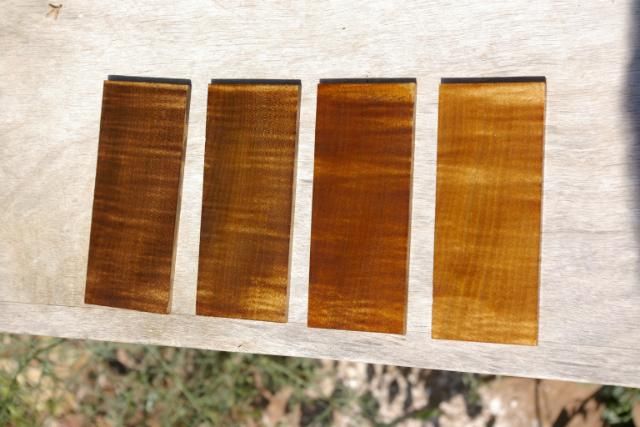The back story is that I got the RB No. 5 at auction. The forend had been chopped down. I ordered replacement forends, but they came in much darker and browner than the redish original. So, I am trying to strip them down and refinish them.
1) I started with StripEase. In this picture, I have applied the first coat of StripEase. It shows the difference in colors.

2) I did three coats of StripEase, I wiped it off with papertowels, and rubbed it out with mineral spirits and acetone.

3) Figuring the StripEase was played through, I switched to Moorland Finish remover.

4) The Moorland Finish Remover is more liquid than gel. I applied it with a paint brush and then scrubbed each piece with a toothbrush. It definitely was lifting stain, it was brown ooze. I rinsed it off with water and a light scrub with a scrub pad. I noticed that the forend and handguard were definitely soaking the liquid and water up more. I wonder if this means it's a different type of wood, or if it was just that the buttstock still had lacquer in it.

In the last picture, I added a sanded side of the original, cut down forend. It is much redder. Even the buttstock is brownish, sort of green. The forends are darker still.
So, question: Do I re-treat with Finish Remover or StripEase more, or use Oven Cleaner, Bleach, Vinegar?
Incidentally, how do you use bleach to do this? How long, how to apply, how to clean.











